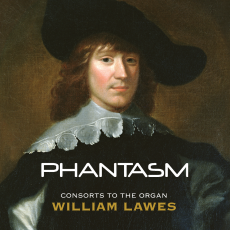Phantasm - Lawes: Consorts to the Organ - Musical Toronto
CD Review: Phantasm viol consort brightens up broken musical rules of William Lawes
English viol consort Phantasm has released a new album that celebrates the weird-and-wonderful musical world of William Lawes (1602-1645) with a collection of "consorts to the organ" that were performed at court, in the company of the composer's friend and patron, King Charles I.
This chamber music, written in a polyphonic style where the viols pass the main musical lines to each other casually, as if playing a game of pitch-and-catch, is so unusual that Phantasm founder, director and viol master Laurence Dreyfus has written an accompanying essay, "Consorts to the Organ - A Guide to the Perplexed."
Dreyfus is unkind to his own musicianship when he writes that Lawes' music for viol consort is "an acquired taste," because, especially in Phantasm's rich, forthright, gently paced interpretations, there is much unalloyed musical magic.
All the more shocking then when the little portable pipe organ comes in on a dissonant chord, or when the music veers off into an unexpected, unrelated key, or when the individual musical lines suddenly part harmonic and rhythmic company.
We have to qualify what we mean by shocking, of course. Our modern ears, exposed to all sorts of musical experimentation, need something much more weird than Lawes' creations to get us riled up. But, even so, there are eyebrow-raising passages here.
All tonal music relies on a mixture of consonance and dissonance to help create inner tension. Sometimes the tension comes from the simple passage of major to minor and then back again (each key contains major and minor chords, depending on which note one bases the chord on). Renaissance and Baroque styles are full of creative dissonance, used within a set of tradition-bound harmonic rules, to help underline the desired emotional effect.
Lawes flaunts and breaks these rules with wild abandon. Because there are no personal reflections on his creative process, we don't know exactly why.
Musicologists suggest Lawes was chronically bored, looking for ways to distract himself with experiments. But these little bursts of silliness could also be keys to secrets known only to composer, king and their closest friends.
Because this is music meant for a tight-knit group to stave off the damp dark of an English winter's eve, I'm convinced each and every composerly detour is an inside joke (Couperin made fun of courtiers in his harpsichord pieces; Haydn's music is full of nudges and winks; Elgar did it in public with his Enigma Variations).
We also have to remember that Charles I was constantly at odds with his subjects over matters religious and fiscal, leading to two consecutive civil wars and, eventualy, his arrest and beheading. Lawes himself owes his early death to a fatal bullet during the Siege of Chester.
It's hard to imagine that this turbulence wouldn't somehow find its way into the composer's work.
Even so, most of this music is gorgeous, clear in its emotional content, amply conveyed in the beauty that emanates from this lucky pairing of composer and interpreters.

